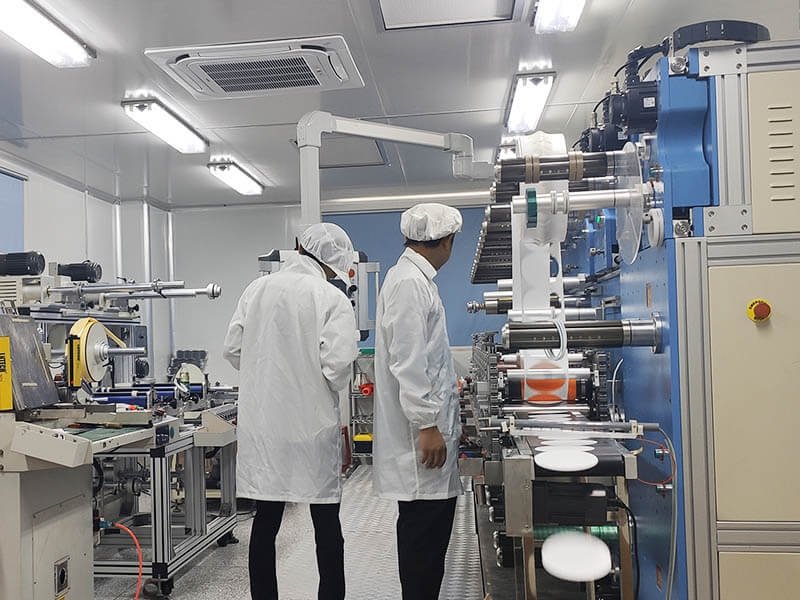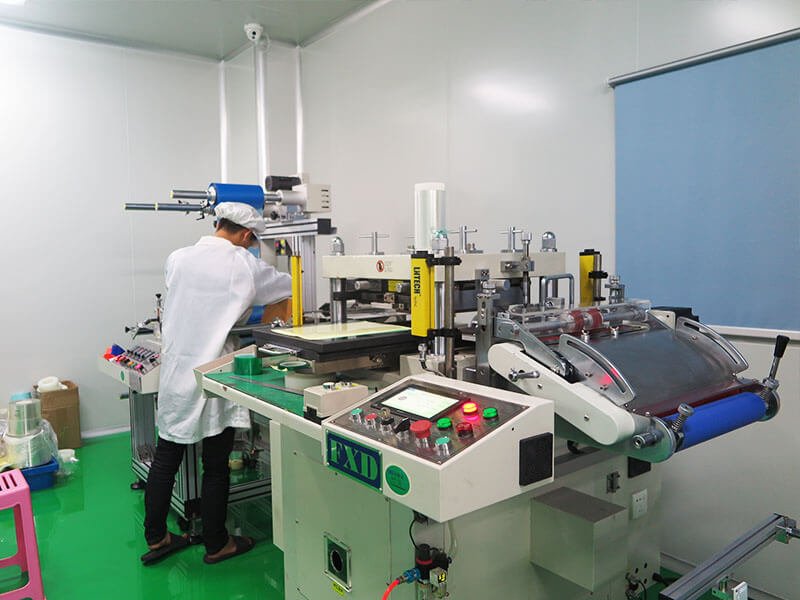Rotary Die-Cutting
Rotary die cutting involves the use of a cylindrical die that is mounted on a rotary press. The material to be cut is fed through the press, and the die rotates at high speed, cutting the desired shape into the material as it passes through the machine.
This method is highly efficient for large-scale production as it allows for high-speed processing and continuous cutting. It is commonly used for applications such as labels, stickers, adhesive tapes, and various packaging materials.


Flat Bed Die Cutting
Flat Bed Die-Cutting is the process of cutting tape using a fixed flatbed die. The Flat Bed Die-Cutting machine places the tape on the die cutting bed and cuts the tape according to the shape on the die cutting mold by pressing down on the mold
It is suitable for cutting straight line shapes, and can handle larger sizes of tapes and thicker materials, which is suitable for custom and short-run production, where frequent design changes are necessary.
Rotary Die-Cutting Advantages
High Precision and Speed
Flexibility in Designs
Cost-Effectiveness
Flat Bed Die-Cutting Advantages
High Cutting Force
Ideal for Prototyping and Sampling
Large Format Capabilities
Rotary die cutting is best suited for high-speed, high-volume production of consistent shapes, while Flatbed die cutting is ideal for custom designs, short production runs, and thicker materials. The choice between these methods depends on the specific requirements of the project, the material being used, and the desired production volume.
Both Rotary and Flatbed die cutting have their distinct advantages and best-fit applications. DCA Tape often choose the method based on factors such as the type of material, required production volume, complexity of the design, and cost considerations. Additionally, advancements in technology have led to hybrid die cutting systems that combine the benefits of both methods, providing even more options for die cutting solutions across various industries.

